Butte County offers an abundance of beautiful places to live. Our urban areas are surrounded by farmland, open space, foothills and the Sierra Nevada Mountains, and along with this wildland interface comes wildlife. 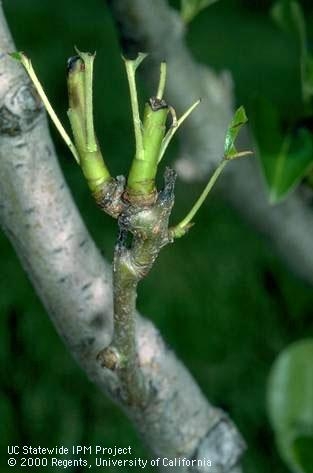
Deer can be destructive to home gardens, landscape plants and trees, orchards, vineyards, and vegetable gardens. They not only graze along the ground, they can also stand on their back legs to reach young shoots and leaves from trees.
Deer are browsers. Their diet consists of semi-woody plant materials, grasses, forbs, fruits, nuts, shrubs, vines, and vegetables. They feed in the late evening and early morning, but they can be active during the day. When food or water is scarce, they often start eating things they normally do not like.
The browsing damage can ruin young shrubs and newly planted trees by stunting their growth. Deer browsing may delay fruit set on young fruit trees. A group of grazing deer can demolish plants and hedges. In late summer, bucks in rut rub antlers against tree trunks to rub off the velvet (the vascular skin that covers growing antlers). They often rub hard enough to tear through bark and damage the cambium layer on tree trunks, and they may even break a small tree by snapping off its trunk.
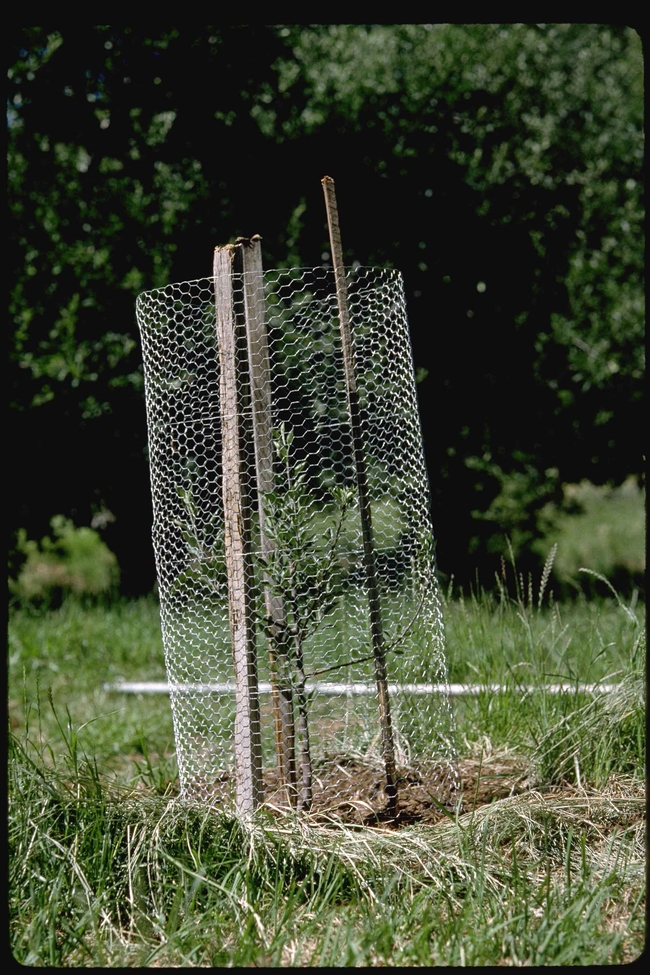
Fencing is the most effective barrier, but also the most costly. If you are enclosing a small vegetable garden fencing can be cost effective, but if you live on a property with acreage this might not be the best solution. Deer can jump over an 8 ft. fence. They can also slide underneath a fence that does not go all the way to the ground.
A shorter fence can deter deer if you place obstacles in their way. Deer do not have very good depth perception. Locating a compost bin against the fence, planting a tree, strategically locating tall birdfeeders, benches, or a birdbath can help prevent deer from jumping into the fenced-in area. In the vegetable garden you can place tall raised beds close together in a pattern that does not allow deer to gain easy access.
Individual plant protectors or barriers around trees and shrubs also work well, especially with new plantings. Wire fencing with metal stakes is one option; there are also tree guards made of various materials like rubber and vinyl that wrap closely around or encircle young trees to protect them from deer (and squirrel) damage. The barrier must rise high enough to protect the plant or tree.
Designing your landscape with a focus on hardscape elements like patios, walls, and pathways helps distract the eye 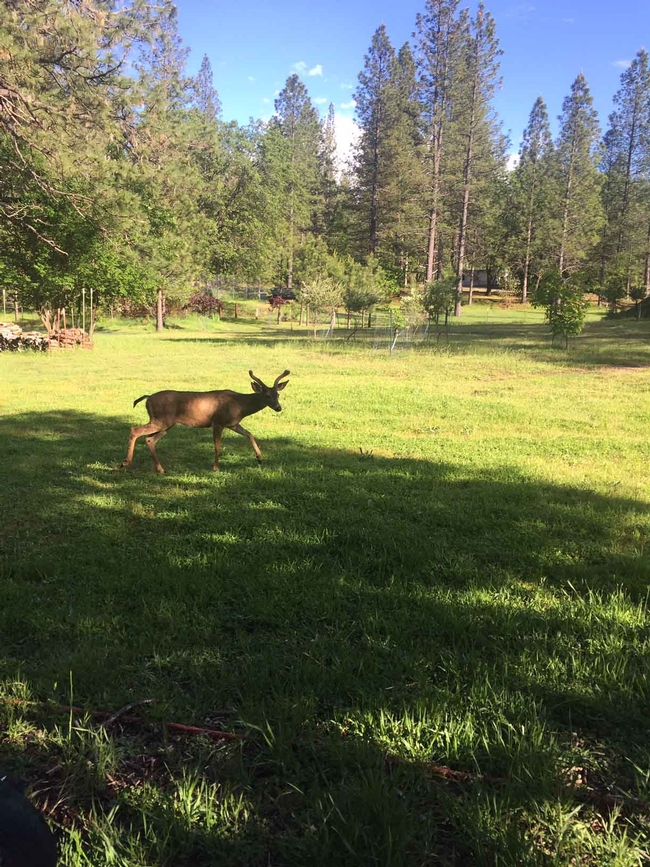
There is no such thing as a deer-proof plant, but some plants are more deer resistant than others. There are many plant lists available to help you choose the appropriate plants for your climate. The Sunset Western Garden Book has several pages of suggested plants. The El Dorado County Master Gardeners have developed an extensive list. And local nurseries have lists specific to our area that you can consult.
According to the University of California Agriculture and Natural Resources Pest Notes #74117, “if there is a surplus of native plants in and around your garden, ornamental plantings may be largely left untouched.” A good starting point is to choose native plants that are either textured or aromatic. There are dozens of attractive native plants that are also deer resistant. A small sampling of these includes Western redbud (Cercis occidentalis), Madrone (Arbutus menziesii), California bay laurel (Umbellularia californica), lilac (Ceonothus spp.), bottlebrush (Callistemon spp.), Manzanita (Arctostaphylos spp.), yarrow (Achillea spp.), Bleeding Heart (Dicentra spp.), Beard tongue (Penstemon spp.), sages (Salvia spp.) and ferns such as Chain fern (Woodwardia fimbriata).
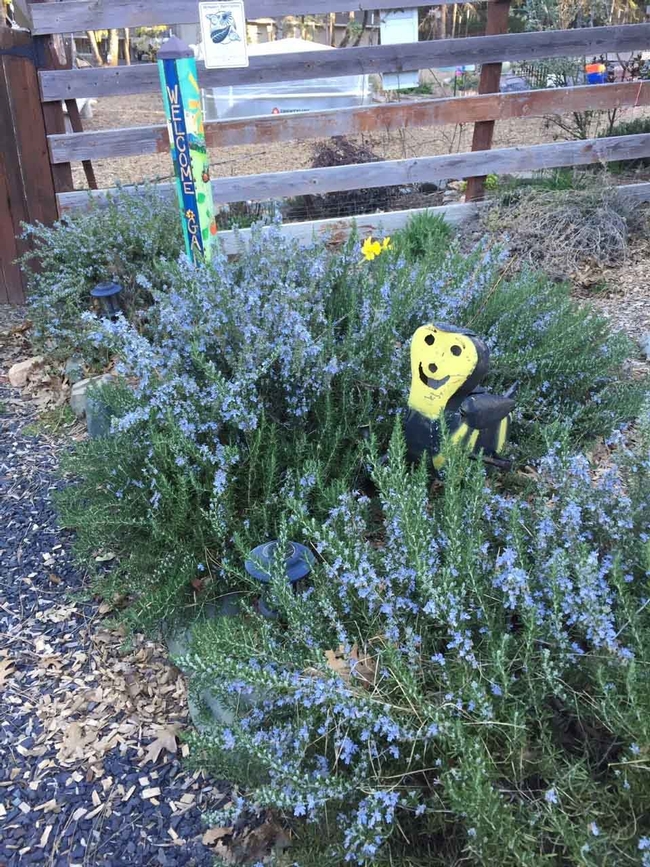
Deer tastes vary by region, season and availability. Fawns will often try things their mothers do not eat, just to see if they like them.
When designing your landscape avoid planting in deer migration pathways. Deer tend to make trails where they travel most. They will continue to use the trail and may trample what you plant.
Deer repellents can be purchased for use on your plants. Their effectiveness diminishes with rainfall, and they need to be reapplied after a period of time. What works in another region may not work in your region. Make sure to read and follow all the instructions. Repellents may not be suitable to spray on your edible plants.
Mechanical or moving devices that startle deer may work for a while, but over time the deer will get used to them. Dogs can also be a big help in deterring deer from visiting your garden.
The goal of deer-resistant gardening is to mesh defense and beauty together. By using a combination of deer-resistant strategies, you may find it easier to co-exist with these beautiful creatures.
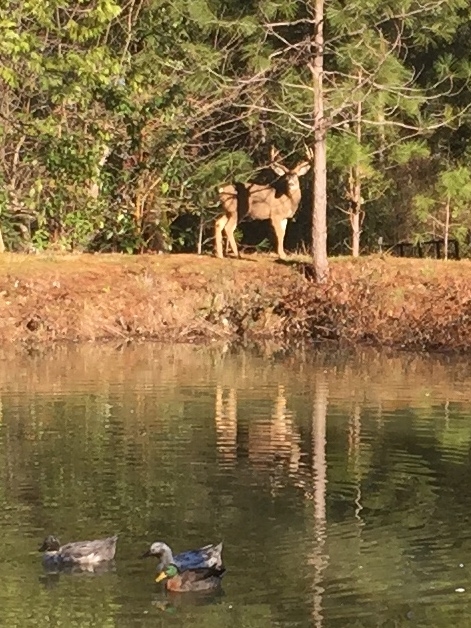
The UC Master Gardeners of Butte County are offering a workshop on Vertebrate Pests in the Garden Saturday, March 14. It will cover strategies for dealing with deer, gophers and moles in the home garden. For a full description and the complete line-up of Spring Workshops, click here.
The UC Master Gardeners of Butte County are part of the University of California Cooperative Extension (UCCE) system. To learn more about us and our upcoming events, and for help with gardening in our area, visit our website. If you have a gardening question or problem, call the Hotline at (530) 538-7201 or email mgbutte@ucanr.edu.